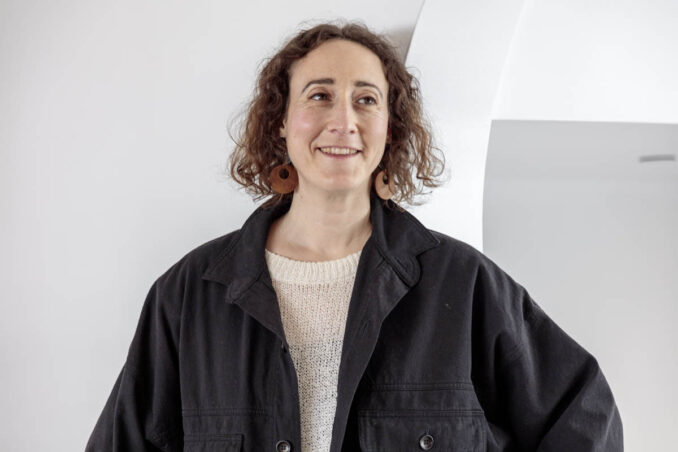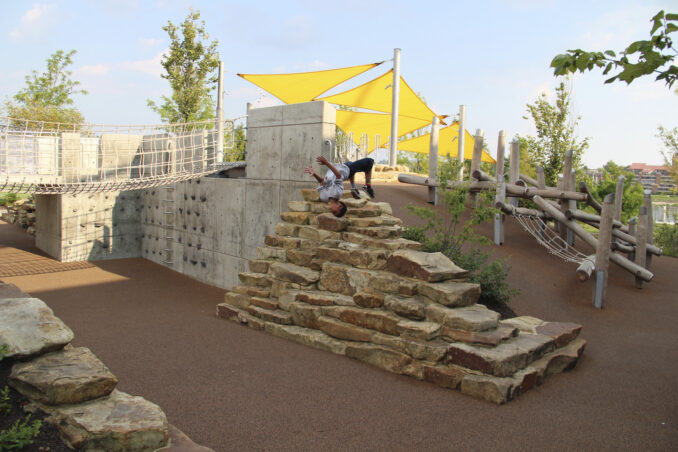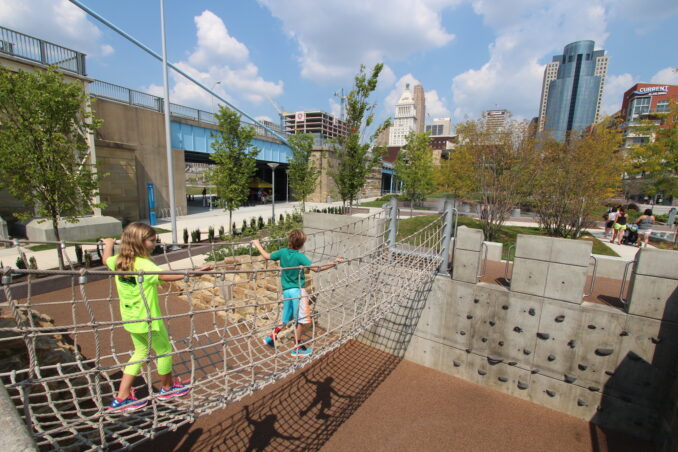
Ruth Siegel is a senior landscape architect based in Los Angeles. She brings a holistic approach to her projects, balancing big-picture thinking with a detail-oriented thoroughness and a passion for creating resilient landscapes. Ruth works on a range of civic and commercial projects from master plans to public plazas to mixed-use developments. No matter the scale, Ruth strives to design multifunctional landscapes that address environmental problems while providing inspiration and delight. Ruth is a thorough communicator and strong critical thinker who balances attention to detail with the design of meaningful spaces. Growing up in New York City informed her desire to design unique, socially-engaging and ecologically-mindful public spaces that create formative experiences and foster connections to nature.
At Sasaki, she has played a vital role in several phases of the Smale Riverfront Park in Cincinnati, a 14-acre park in the floodplain of the Ohio River, including the PNC/ Heekin Family Great Adventure Playscape and the P&G goVibrantscape. In her previous work, she oversaw several large-scale projects including the 15-year master plan for Descanso Gardens, which proposes comprehensive visionary improvements for this unique 160-acre botanical garden in Los Angeles County. She worked closely with their leadership for several years after completion to help them implement this ambitious effort.


WLA: Why did you become a landscape architect?
Until the age of 10, I lived in an apartment on the Upper West Side of Manhattan. Riverside Park was just one block away, and Central Park was four blocks in the other direction. Most of my childhood memories were formed in these two Olmsted-designed parks—this is where I learned to ride a bike and practiced softball, where I went ice skating and roller skating for birthday parties, where I picnicked with friends and attended free summer concerts, where I went sledding on snow days, where I clambered on monkey bars, see-saws, slides and swings of numerous playgrounds, where I climbed on rock outcroppings and played under the tall canopy of elms and oaks… the list goes on and on. I didn’t realize how special that was until my parents moved us to a quiet residential neighborhood in Queens, hoping to give me a more “traditional” upbringing in a house with a proper front and back yard, similar to how they had grown up. What they didn’t realize was that these new private yards paled in comparison to my previous public front and back yards. This move gave me a deep appreciation at an early age for urban public landscapes—the beauty, respite, and joy they bring; the activities and community-gathering they enable—and my path towards landscape architecture began there.
Years later I became interested in environmental studies after learning about “global warming” (as it was known at the time) and the recently developed Kyoto Protocol. I ended up with an undergraduate degree in International Relations, Global Environment track, hoping to help solve climate change through policy. After graduating, I found a job at the NYC Soil and Water Conservation District. My work there centered on research and advocacy around greenstreets and greenroofs to help “keep the water on the land” as my boss put it. While attending a greenroof conference, I first encountered landscape architecture as a profession when all these landscape architects in the audience were asking very detailed questions about things like growing media and soil depth. That’s when I had the eureka moment that set me on my current trajectory… it suddenly dawned on me that it would be infinitely more satisfying to design these systems than just educate people about them! Since then, the more I learned about landscape architecture, the more I realized it was a perfect fit for me, combining my deep connection to urban public landscapes with my passion for addressing environmental challenges.
WLA: How do you start the design process?
When it comes to the design process, I am a deep believer in the importance of “genius loci” (spirit of the place). Each site has intrinsic characteristics, histories, ecologies, communities, and contexts, and the best designs are those that unearth, reveal, and celebrate all of these unique elements. Given that ethos, site analysis is the fundamental first step in my design process. I love learning about all the different layers of a site and how they intersect with each other; the previous uses of a site and the relics that remain; and the people who are connected to the site and what draws them to it. During this discovery process, ideas naturally start to emerge and those ideas form the foundation of the concepts that crystallize later in the design process. There is no such thing as tabula rasa in landscape architecture; every site has many stories to be told.
WLA: What is your approach to landscape design?
With my background in environmental studies, part of my approach is focused on how we can maximize the landscape performance of a site–Can we capture, filter, infiltrate or reuse water? Are there materials that we can reuse or repurpose? Are there natural features that could be restored? The other part of my approach is trying to find ways to integrate elements of delight, playfulness or whimsy into the design, whether that is using sparkle concrete whenever a client will allow it, proposing interactive sculptures, like the Flying Pig at Smale Riverfront Park, or envisioning a Seussian “Funky Forest” concept for the playground at the Wilmington Waterfront Promenade.

